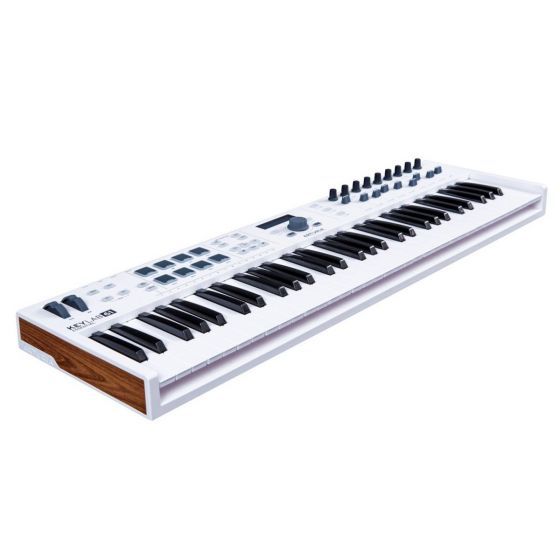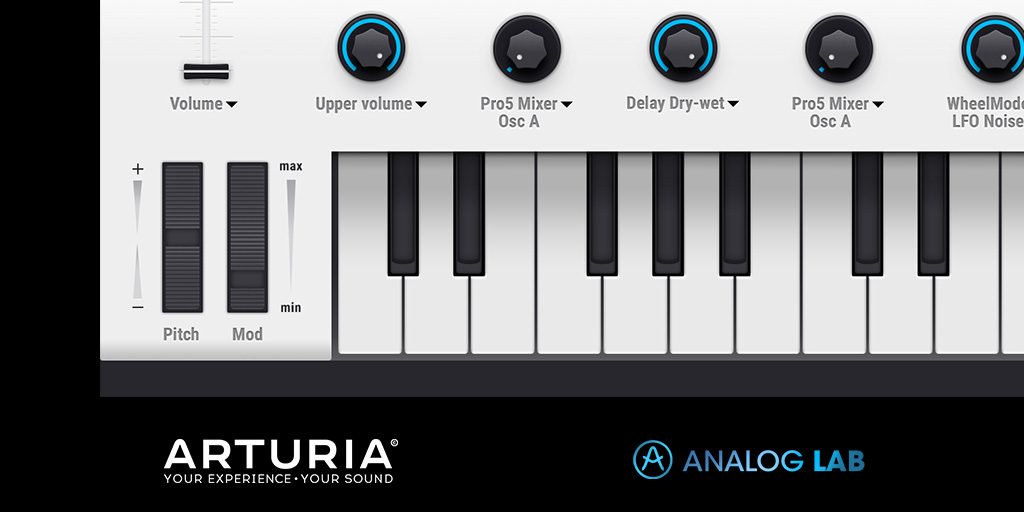

The rhythmic elements are also available in list form and you can simply drag and drop those that appeal to you to the pads of your choice.


With Scene Edit mode, it's extremely easy to assign sounds to all of these different categories, as each has its own pane within the Edit window.Ĭlicking the Edit button for either the upper or lower sound launches the main sound Matrix while a separate menu of Arpeggiation patterns exist from which you can choose your 'Melody' part, which can then be assigned to either the upper or lower sound. This allows you to load two sounds at once, separated by a user-definable keyboard split point, a separate 'Melody' part using the Arpeggiator and provision of drum beats and one-shot effects which can be triggered from the pads. One of the main differences between Laboratory and its brothers, which is represented by 'Scene' mode. Lab testsĪs you'd expect with Arturia's pedigree, the sounds are wonderful.
Arturia analog lab arpeggiator software#
The only concession, to save space, is that the drum pads are arranged in a 2x2 matrix in software form, whereas they're in a 4x1 row on the keyboard. The functions of the keyboard are mapped to the software, so you'll find an exact replica of this surface via which you can edit as freely. Laboratory provides a matrix through which sounds can be selected, either via the synths within Arturia's own collection, or via different sound categories including Bass, EFX, Pad, Strings and so on.Īlternatively, you can browse again via specific 'Characteristics', such as Ambient, Aggressive, Soft, Soundtrack or other musically relevant data. Software centralĪs with Factory, Laboratory ships with over 3,500 presets that are taken directly from Arturia's leading software synths, with sounds from the ARP 2600V, CS-80V, Jupiter-8V, Minimoog V, Modular V, Prophet V and Prophet VS instruments. However, the real power of this hybrid solution resides in the software. Round the back of the keyboard, you'll find the USB connection that supplies the dual purpose of transmitting MIDI data and supplying bus-power, alongside regular MIDI In and Out ports and inputs for Expression and Sustain pedals.ĭuring our experiments with Factory, we found ourselves happy to leave the keyboard while exploring the software but the extended parameter control on Laboratory's keyboard left us reaching for it time and again as we edited sounds - the hybrid nature of this package is much more successful.
Arturia analog lab arpeggiator mod#
With a 49-key playing surface, four drum pads, nine sliders, 10 rotary encoders, 10 snapshot buttons for preset 'scene' recall, transport controls, preset recall and real-time manipulation options in the form of pitch-bend and mod wheels, this screams of a more professional solution.


 0 kommentar(er)
0 kommentar(er)
